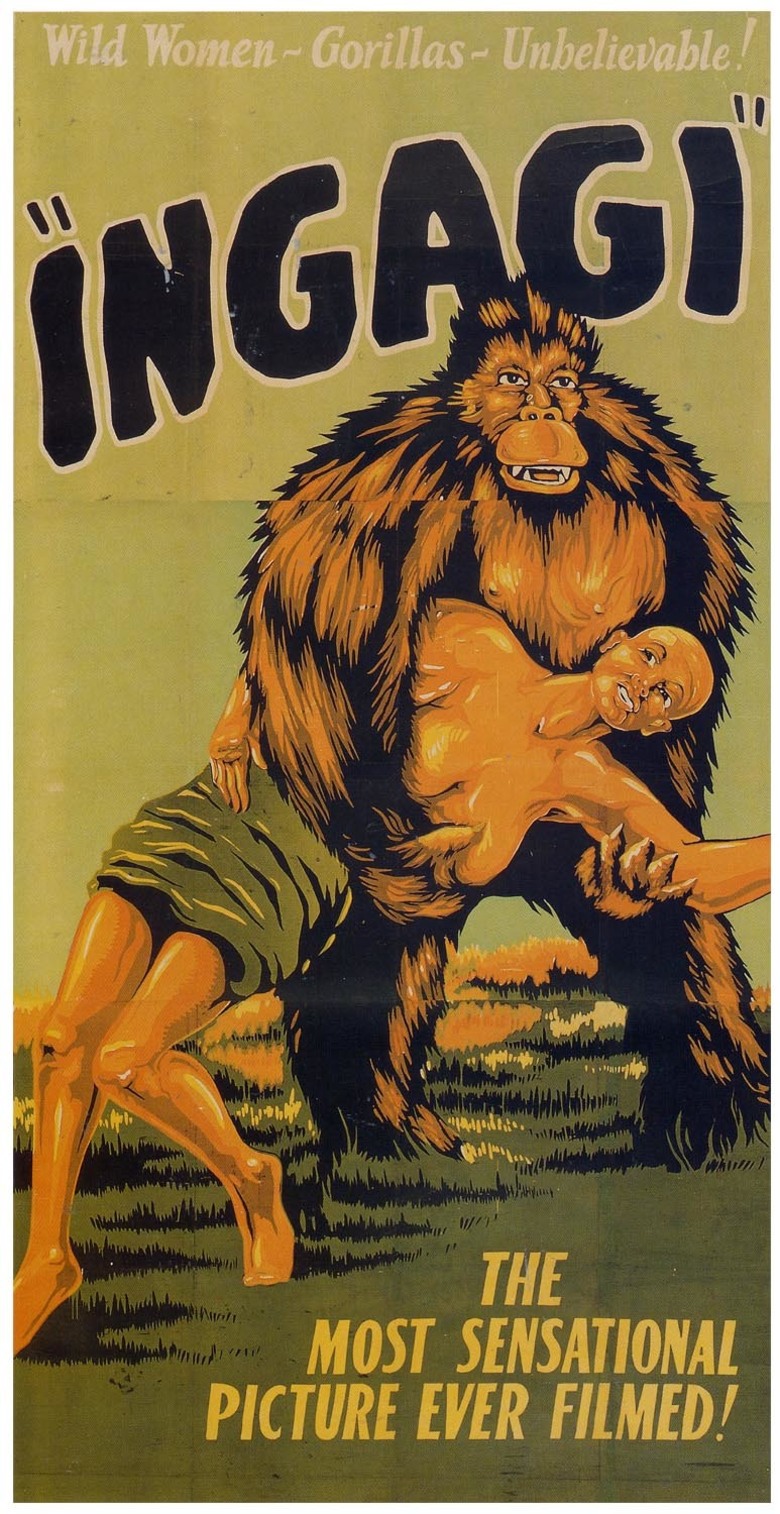 According to a 2008 article, “If a long-mislaid but vividly documented Depression-era motion picture called INGAGI should ever resurface…its rediscovery alone would justify a monumental curatorial celebration and an overpriced DVD edition.” Well, that day has arrived: the 1930 poverty row wonder INGAGI has indeed resurfaced, and while the “monumental curatorial celebration” hasn’t come to pass, as of January 2021 we do have a DVD—or rather Blu-ray—edition, courtesy of Kino-Lorber (I’ll leave it to you to decide whether it’s overpriced).
According to a 2008 article, “If a long-mislaid but vividly documented Depression-era motion picture called INGAGI should ever resurface…its rediscovery alone would justify a monumental curatorial celebration and an overpriced DVD edition.” Well, that day has arrived: the 1930 poverty row wonder INGAGI has indeed resurfaced, and while the “monumental curatorial celebration” hasn’t come to pass, as of January 2021 we do have a DVD—or rather Blu-ray—edition, courtesy of Kino-Lorber (I’ll leave it to you to decide whether it’s overpriced).
INGAGI, which has been out of circulation for untold decades, inspired a great deal of controversy due to its mock-documentary overlay. To what degree viewers bought into the documentary ruse remains an open question—on the Blu-ray’s two audio commentaries by Kelly Robinson and Bret Wood, the former claims audiences fell for it completely while the latter believes they were a bit savvier. The film in any event was a sizeable hit, with a then-massive $4 million box office take and an influence that was long lasting; it foreshadowed KING KONG (in the subject matter), MONDO CANE (as INGAGI contains many elements that might now be termed “mondo”) and THE BLAIR WITCH PROJECT (in the “reality” stylings), to name but a few examples.
The controversy, alas, overwhelmed INGAGI. Following numerous lawsuits, including one by filmmaker Grace Mackenzie (who made the 1915 film HEART OF AFRICA, unauthorized footage from which provided a great deal of INGAGI’s scenery), the Federal Trade Commission effectively banned it from American screens. Now, for better or (more likely) worse, it’s back.
The film opens with a scroll that, in an exploitation movie mainstay that persists to the present day, enumerates its educational aspects (as justification for the nudity and sensationalism). It informs us that in the spring of 1926 one Captain Swain and his pal Sir Hubert Winstead embarked on an expedition through Africa in search of “Ingagi Country.” There it’s been claimed that a native tribe, as part of an age-old fertility ritual, sacrifices a barren woman each year to the Ingagi, or native gorillas, which has resulted in the birth of human-gorilla hybrids.
Swain and Winstead’s odyssey, the particulars of which are enumerated by an off-screen narrator (Louis Nizor), takes them through alligator and hippopotamus infested rivers, python-filled trees and numerous African villages featuring bare-chested women. In true old-timey documentary fashion (see NANOOK OF THE NORTH and THE SKY ABOVE, THE MUD BELOW, to name but a couple examples) our “civilized” heroes treat their native charges in a thoroughly patronizing and superior manner, with terms like “savage” and “primitive” voiced quite frequently by the narrator, and graphically kill several animals.
At last, following the discovery of a “tortadillo” (a silly looking turtle-armadillo hybrid created especially for the film), the expedition reaches the Ingagi country. The Ingagi on display, alas, aren’t very impressive, consisting of various different primates and a guy in a gorilla suit (Charles Gemora, who played “Gorilla” in numerous films before and after INGAGI). The latter, who’s seen making off with an African woman in order to create a baby Ingagi, is a far cry from the 6 foot monstrosity described by the narration, and the human-gorilla hybrids on display are too dimly glimpsed to make much of an impression. Ultimately INGAGI concludes just as it began: with an educational scroll.
The film is, frankly, lousy. It’s incredibly dull, with nothing resembling a narrative and a monotonous up-tempo score that plays continuously. The oft-mismatched jungle footage is another distraction, with authentic documentary snippets juxtaposed with dramatic movie clips and newly shot footage lensed in LA’s Griffith Park. Such a hodgepodge may have been acceptable to audiences in the early 1930s but doesn’t work now, and then there’s the issue of racism, which is evident throughout a film that plays best as a time capsule, and a none-too-flattering one.
Vital Statistics
INGAGI
Congo Pictures, Ltd./Kino
Director: William S. Campbell
Producer: William Alexander
Screenplay: Adam Hull Shirk
Cinematography: L. Gillingham, Ed Joyce, Fred Webster
Editing: Grace McKee
Cast: Sir Hubert Winstead, Daniel Swayne, Louis Nizor, Charles Gemora, Mel Koontz
